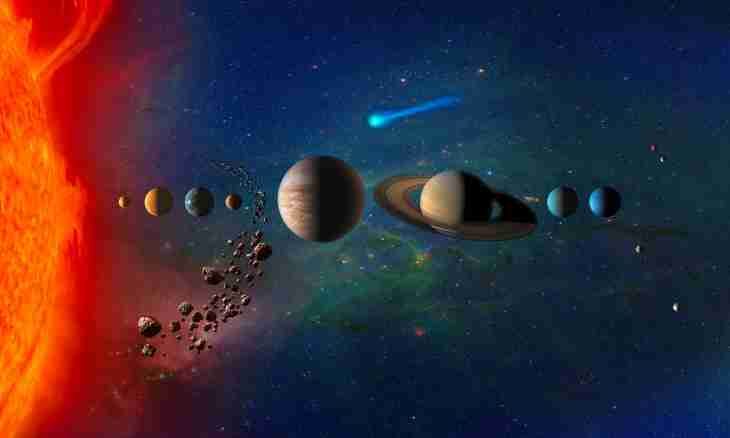The question of the number of planets is not so unambiguous as it can seem at first sight. The answer to it is defined also by that sense which invests in the word "planet", and the level of human knowledge of the Universe.
In terms of modern astronomy, the planet is the celestial body rotating around a star. Such body is rather big that under the influence of own gravitation to become roundish when forming, but insufficiently massivno for thermonuclear synthesis. The first criterion distinguishes the planet from asteroids, and the second – from stars. But so was not always.
Planets of the Solar system
The word "planet" is translated from Greek as "wandering". So in the ancient time called stars which from the point of view of the terrestrial observer move on a firmament, unlike "motionless" stars. Certainly, in those days only those planets which it is possible to see with the naked eye were known to people: Mercury, Venus, Mars, Jupiter, Saturn. They did not identify the earth with such bodies, it was represented by "the center of the universe" therefore antique astronomers spoke about five planets.
In the Middle Ages the Sun and the Moon were regarded as the planet too therefore contained seven planets. The revolution in astronomy made by N. Copernicus forced to bring the Sun from among planets and to include in it Earth. It was necessary to revise also the status of the Moon rotating not around the Sun, and around Earth. Since opening of satellites of Jupiter by G. Galilei, it is possible to speak about a new concept: the body rotating not around a star, and around the planet – the satellite. Thus, at the beginning of Modern times there are six planets: five which were known still in the ancient time, and Earth. Subsequently new planets were discovered: in 1781 – Uranium, in 1846 – the Neptune, in 1930 – Pluto. From now on was considered that in the Solar system of 9 planets. In 2006 the International Astronomical Union concretized a concept of the planet. Along with already mentioned criteria – the address around a star, rounded shape – the third was added: in an orbit there should not be other bodies, not being satellites this. In the light of the latest discoveries the Pluto did not correspond to the last criterion therefore it was eliminated planets. So, according to modern astronomers, in the Solar system of 8 planets.
Exoplanets
Since the time of Giordano Bruno the people asked a question whether exist in the planet Universe, rotating around other stars. Theoretically it was represented possible, but proofs were not. The first proof appeared in 1988: calculations made by group of the Canadian scientists forced to assume that the star Tsefey's Scale has a planet. In 2002 the existence of this planet was confirmed. The foundation was so laid for search of the planets located outside the Solar system – exoplanets. It is impossible to specify exact quantity even those from them which are opened by astronomers, scientists regularly find new planets, but the number of open exoplanets already exceeds one thousand. A variety of exoplanets blows the mind. Among them is also such what are not present in the Solar system: "hot floodlights", water giants, planets oceans, diamond planets. Is also such which are similar to Earth, but whether there is on them life, it is not possible to learn yet. Astronomers assume that in only one galaxy the Milky Way the number of exoplanets can exceed 100 billion. How many they can be in all infinite Universe, it is impossible to tell even hypothetically.

